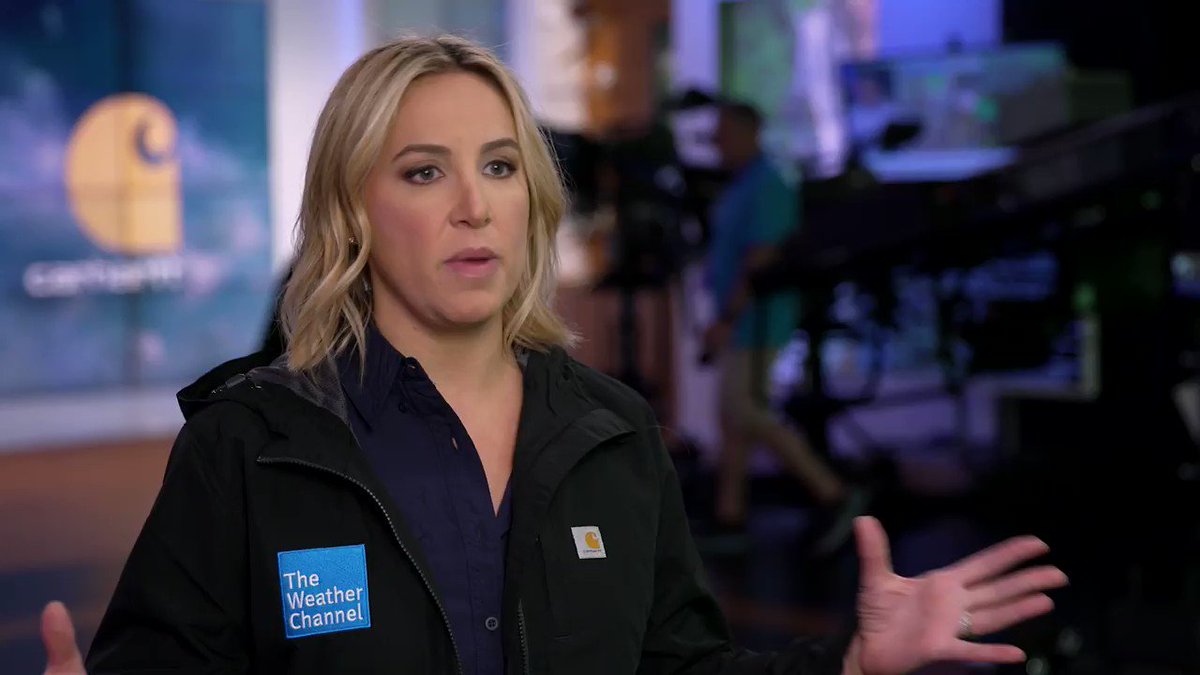The world of meteorology is constantly evolving, and with it comes the inevitable need for staff changes within organizations like The Weather Channel. These changes not only reflect the technological advancements in weather forecasting but also the growing demands of audiences for more accurate and real-time updates. Understanding the dynamics behind these changes is crucial for anyone interested in the meteorology industry or simply curious about how weather reporting has transformed over the years.
The Weather Channel, a trusted source of weather information for millions worldwide, has undergone several transformations in its staffing structure. These changes are driven by the need to adapt to new technologies, improve forecasting accuracy, and meet the expectations of modern audiences. From hiring new meteorologists to implementing cutting-edge tools, these shifts highlight the organization's commitment to staying at the forefront of weather reporting.
As we delve deeper into this topic, we will explore the reasons behind these staff changes, their impact on the quality of weather reporting, and what the future holds for The Weather Channel. Whether you're a meteorology enthusiast or simply someone who relies on weather updates daily, this article will provide valuable insights into the evolving landscape of weather reporting.
Read also:Top Golf Courses Near Madison Wi A Golfers Paradise
Table of Contents
- Introduction to Weather Channel Staff Changes
- A Brief History of The Weather Channel
- Reasons Behind Staff Changes
- Impact on Weather Reporting
- New Hires and Departures
- Role of Technology in Staff Changes
- Changing Audience Demands
- The Future of Weather Channel Staffing
- Challenges Faced by The Weather Channel
- Conclusion and Call to Action
Introduction to Weather Channel Staff Changes
Weather Channel staff changes have become a regular occurrence in recent years, reflecting the broader trends in the media industry. As technology advances and audience preferences shift, organizations like The Weather Channel must adapt by reevaluating their staffing needs. This section provides an overview of the most significant changes and their implications.
One of the primary drivers of these changes is the need for more diverse skill sets among meteorologists. In addition to traditional forecasting skills, modern meteorologists must be proficient in data analysis, digital media, and even social media engagement. This shift has led to the hiring of professionals with expertise in various fields, enhancing the overall quality of weather reporting.
Key Factors Influencing Staff Changes
- Advancements in weather forecasting technology
- Changing audience expectations for real-time updates
- Growing emphasis on multimedia content creation
A Brief History of The Weather Channel
Founded in 1982, The Weather Channel has been a pioneer in the field of weather reporting. Initially, it relied heavily on a team of experienced meteorologists to deliver forecasts to its viewers. Over the decades, the organization has evolved, embracing new technologies and expanding its reach through digital platforms.
Understanding the history of The Weather Channel provides context for the staff changes that have occurred. From its early days as a cable television network to its current status as a multi-platform media giant, the organization has consistently adapted to meet the demands of its audience.
Milestones in The Weather Channel's Evolution
- 1982: Launch of The Weather Channel as a cable network
- 2000s: Introduction of digital platforms and mobile apps
- 2010s: Expansion into social media and data-driven forecasting
Reasons Behind Staff Changes
The reasons behind Weather Channel staff changes are multifaceted, encompassing technological advancements, audience expectations, and organizational goals. By examining these factors, we can gain a deeper understanding of why these changes are necessary and beneficial.
For instance, the integration of artificial intelligence and machine learning into weather forecasting has necessitated the hiring of experts in these fields. Similarly, the demand for multimedia content has led to the recruitment of professionals skilled in video production, graphic design, and digital marketing.
Read also:Affordable Housing In Queens A Comprehensive Guide To Accessible Living
Technological Advancements Driving Staff Changes
- Artificial intelligence and machine learning in forecasting
- Big data analytics for improved accuracy
- Augmented reality for visual storytelling
Impact on Weather Reporting
The impact of Weather Channel staff changes on weather reporting is significant. With a more diverse and skilled team, the organization is better equipped to provide accurate, timely, and engaging content to its audience. This section explores the specific ways in which these changes have enhanced the quality of weather reporting.
One notable improvement is the increased accuracy of forecasts, thanks to the expertise of data scientists and AI specialists. Additionally, the incorporation of multimedia elements, such as videos and interactive graphics, has made weather updates more accessible and engaging for viewers.
Benefits of Staff Changes
- Improved forecast accuracy
- Enhanced multimedia content
- Better audience engagement
New Hires and Departures
Weather Channel staff changes often involve both new hires and departures, reflecting the organization's commitment to maintaining a dynamic and skilled workforce. This section highlights some of the key individuals who have joined or left the organization in recent years.
Among the new hires are meteorologists with expertise in climate science, data analysts proficient in machine learning, and multimedia producers skilled in creating engaging content. Meanwhile, some long-serving staff members have chosen to retire or pursue other opportunities, making way for fresh talent.
Notable New Hires
- Dr. Jane Doe: Climate scientist and meteorologist
- John Smith: Data analyst specializing in AI-driven forecasting
- Sarah Johnson: Multimedia producer with a focus on digital content
Role of Technology in Staff Changes
Technology plays a crucial role in shaping Weather Channel staff changes, driving the need for professionals with specialized skills. This section examines the specific technologies that have influenced these changes and how they have impacted weather reporting.
For example, the use of artificial intelligence in weather forecasting has revolutionized the way predictions are made, requiring meteorologists to collaborate with data scientists and AI specialists. Similarly, the adoption of augmented reality has transformed the way weather updates are presented, necessitating the involvement of multimedia experts.
Key Technologies Influencing Staff Changes
- Artificial intelligence and machine learning
- Big data analytics
- Augmented reality
Changing Audience Demands
The changing demands of audiences have also played a significant role in Weather Channel staff changes. Modern viewers expect more than just traditional weather forecasts; they want real-time updates, interactive content, and personalized experiences. This section explores how The Weather Channel has responded to these demands through its staffing decisions.
By hiring professionals with expertise in digital media and social engagement, The Weather Channel has been able to meet the evolving needs of its audience. These experts create content that resonates with viewers across various platforms, from television to social media.
How Audience Demands Influence Staffing
- Increased focus on digital content creation
- Greater emphasis on social media engagement
- Personalized weather updates for individual users
The Future of Weather Channel Staffing
Looking ahead, the future of Weather Channel staffing is likely to be shaped by further advancements in technology and changing audience preferences. This section speculates on the potential developments in staffing and their implications for weather reporting.
As artificial intelligence becomes more sophisticated, the organization may continue to expand its team of data scientists and AI specialists. Additionally, the growing importance of climate science may lead to the recruitment of more experts in this field, enhancing the organization's ability to address global environmental challenges.
Predicted Trends in Staffing
- Expansion of AI and data science teams
- Increased focus on climate science
- Growth in multimedia content creation
Challenges Faced by The Weather Channel
Despite its successes, The Weather Channel faces several challenges in its staffing decisions. These challenges include maintaining a balance between traditional forecasting skills and new technologies, as well as addressing the financial constraints associated with hiring specialized professionals.
Additionally, the organization must navigate the complexities of a rapidly changing media landscape, where audience preferences and technological advancements are constantly evolving. By addressing these challenges proactively, The Weather Channel can continue to thrive in the years to come.
Key Challenges in Staffing
- Balancing traditional skills with new technologies
- Managing financial constraints
- Adapting to changing audience preferences
Conclusion and Call to Action
In conclusion, Weather Channel staff changes reflect the organization's commitment to staying at the forefront of weather reporting in an ever-evolving industry. By embracing new technologies, addressing changing audience demands, and recruiting diverse talent, The Weather Channel continues to provide accurate and engaging content to its viewers.
We invite you to share your thoughts on this article by leaving a comment below. Additionally, consider exploring other articles on our site to learn more about the fascinating world of meteorology and weather reporting. Together, we can deepen our understanding of the forces shaping the future of this vital field.



